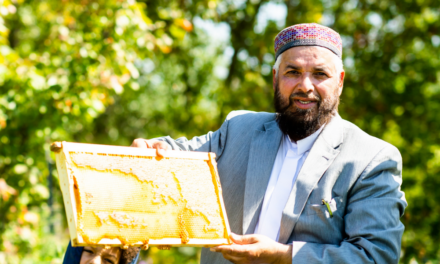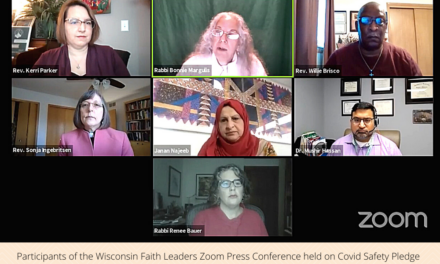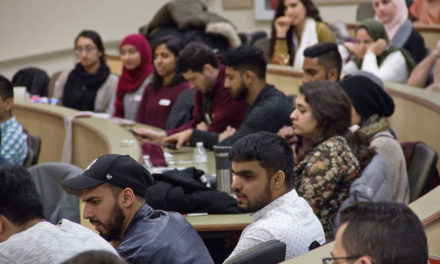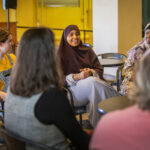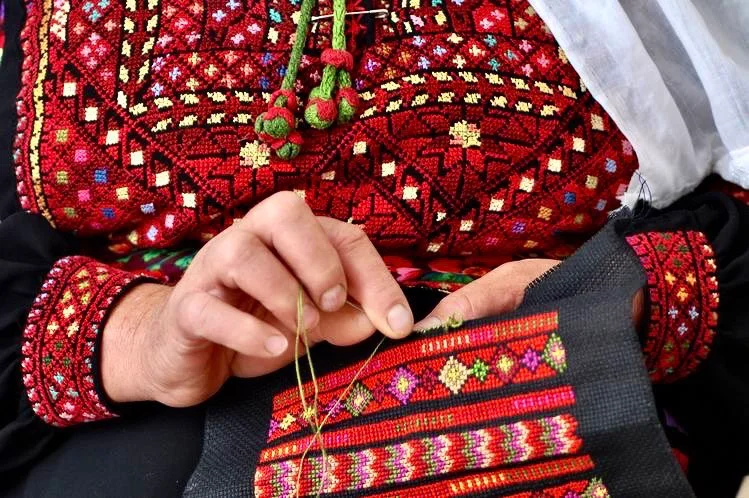
Photo courtesy of Bayt al Fann
The style and decorative elements of a traditional Palestinian thob contain intricate communication about the wearer’s marital status, wealth and geographical origin.
Marquette University Associate Professor Enaya Othman, Ph.D., received a prestigious Fulbright Scholar Award to research Palestinian and Jordanian women’s use of traditional dress, the forces behind it and the meanings they attribute to it. The award will support her archival and onsite field research in Jordan and in the Palestinian Territories of the West Bank during the 2023-24 academic year.
“I believe it’s a historic award: a Palestinian professor winning a Fulbright to do research in Palestine (and Jordan) on the cultural meanings of the Palestinian thob (a loose-fitting robe with decoration signifying regional affiliation and other social factors),” MU Associate Professor of English and Africana Studies Jodi Melamed wrote in an email to the Wisconsin Muslim Journal.
Fulbright is the most widely recognized and prestigious international exchange program in the world. It was created in 1946 to increase mutual understanding between the American people and people of other countries. It is supported by an annual appropriation by the U.S. Congress. Its alumni include Nobel laureates, Pulitzer Prize winners, MacArthur Fellows, heads of state, leading journalists, artists, scientists, CEOs and teachers, as well as leaders across the public, private and non-profit sectors.
A presidentially appointed 12-member board selects all the Fulbright Award recipients. The award letter to Othman, dated April 14, stated, “Your grant is a reflection of your leadership and contributions to society.”
Othman, who teaches languages, literature and cultures at Marquette, is the founder of the Arab and Muslim Women’s Research and Resource Institute and president of its board of directors. Her research focuses on Arab and Muslim feminism, immigration and cultural encounters in colonial and diaspora contexts. Her book Negotiating Palestinian Womanhood: Encounters between Palestinian Women and American Missionaries, 1880s-1940s (2016) deals with the Friends Girls School as a site of interaction between Arab and American cultures.
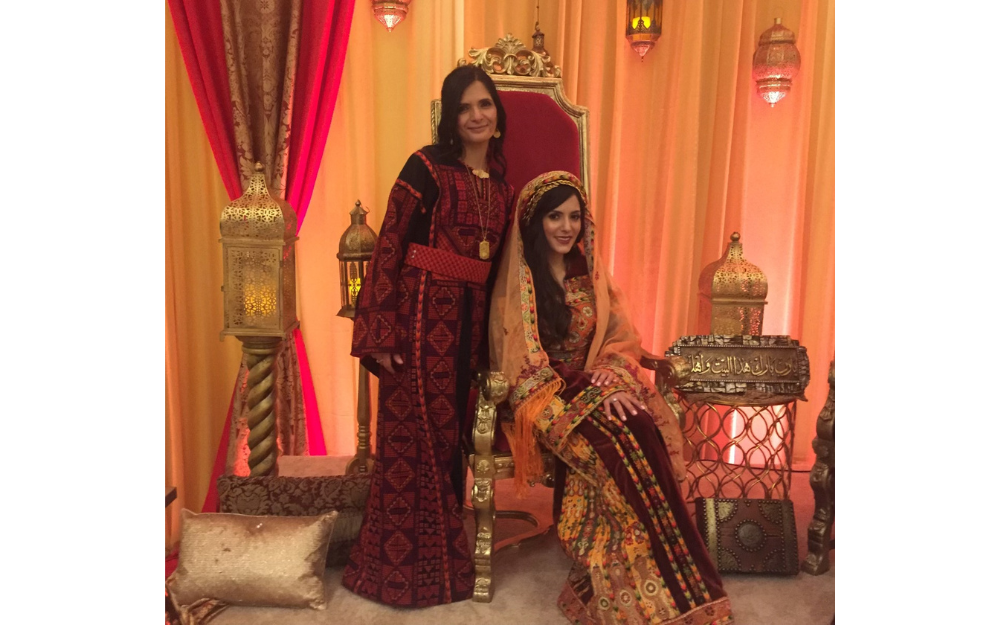
Photo courtesy of Enaya Othman
Marquette University Associate Professor Enaya Othman (left) and her daughter Leean Othman (right) wear traditional Palestinian thobs at Leean’s wedding.
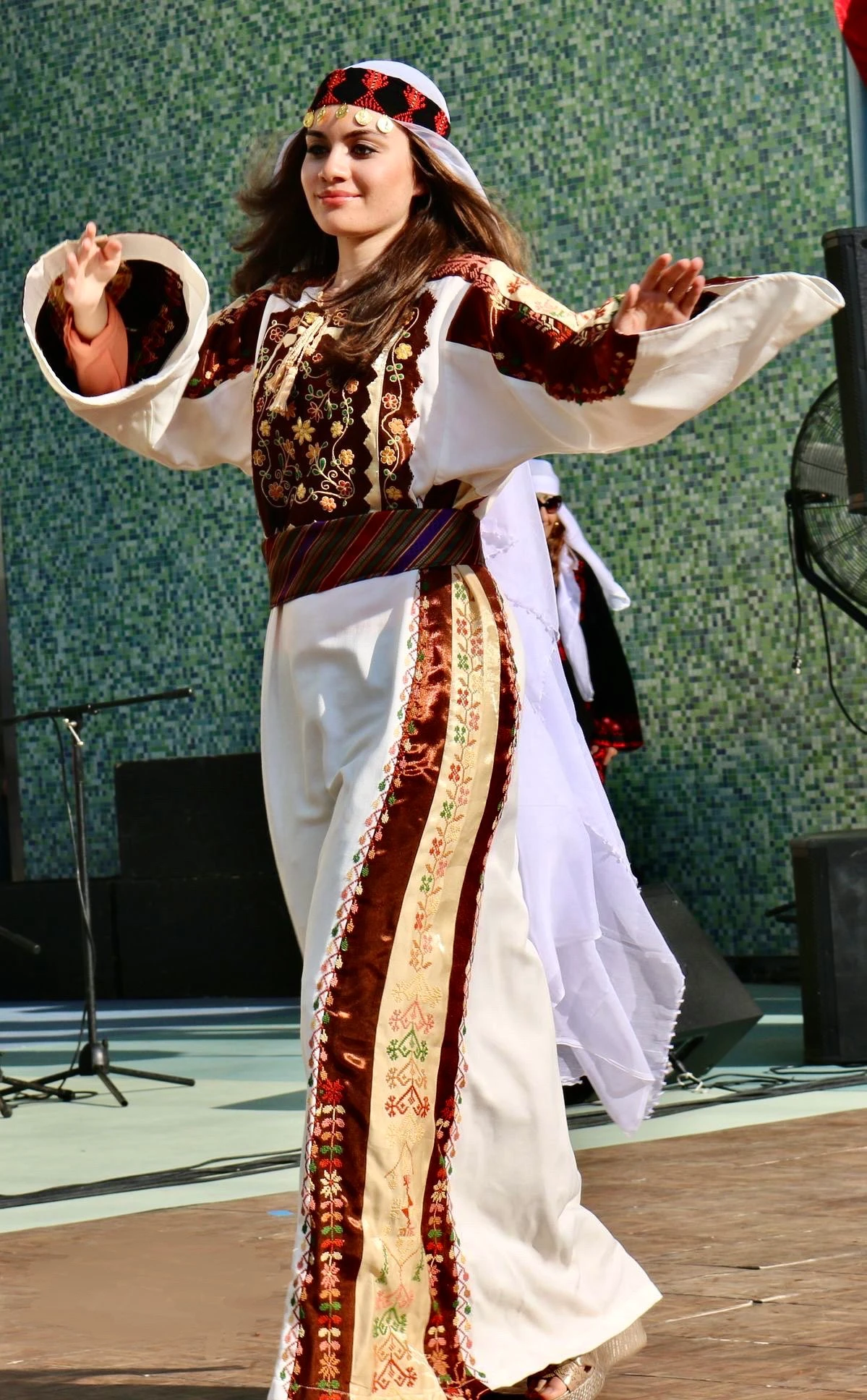
Photo courtesy of Bayt al Fann
Tatreez, Palestinian embroidery, is more than decoration; it is a language of symbols.
Othman has led several projects and published articles on the use and reinterpretation of women’s cultural dress in the United States as one of the ways by which women mediate between cultural identity and modernity, and affirm their power and position. Her research analyzes meanings, politics, histories and social relations embedded in cultural clothing and on women’s agency in regard to cultural clothing in Palestine and Jordan, and their diaspora communities in the U.S.
She also developed and acted as the principal organizer of the 2014 Milwaukee Public Museum exhibit: “Beyond the Veil: Dress, Identity and Tradition Through the Eyes of the Muslim and Arab Women of Greater Milwaukee.”
In her upcoming research, supported by her Fulbright Scholar Award, Othman aims to collect and share women’s stories in relation to clothing that “will contest the stereotypical images of Arab and Muslim women as oppressed and hidden within society,” she wrote in her research proposal. She plans to share her research in academic articles. In addition, she intends to create a digital archive with pictures of national dresses and women’s narratives. It will be accessible to both the general public and scholars, and serve as an educational resource for schools, universities and other institutions.
She has also planned a 2026 book based on this work that will explore women’s engagement as dress wearers, entrepreneurs, taste-makers and skilled workers in the West Bank and Jordan in the evolution of cultural clothing and its “plethora of meanings and messages.” A major aim of this project is to look beyond perceptions of Arab women’s clothing as oppressive, proof of their weakness and male-enforced, Othman wrote. It will “introduce women’s agency into the narrative … eliminating biases that marginalize and victimize Arab and Muslim women.”
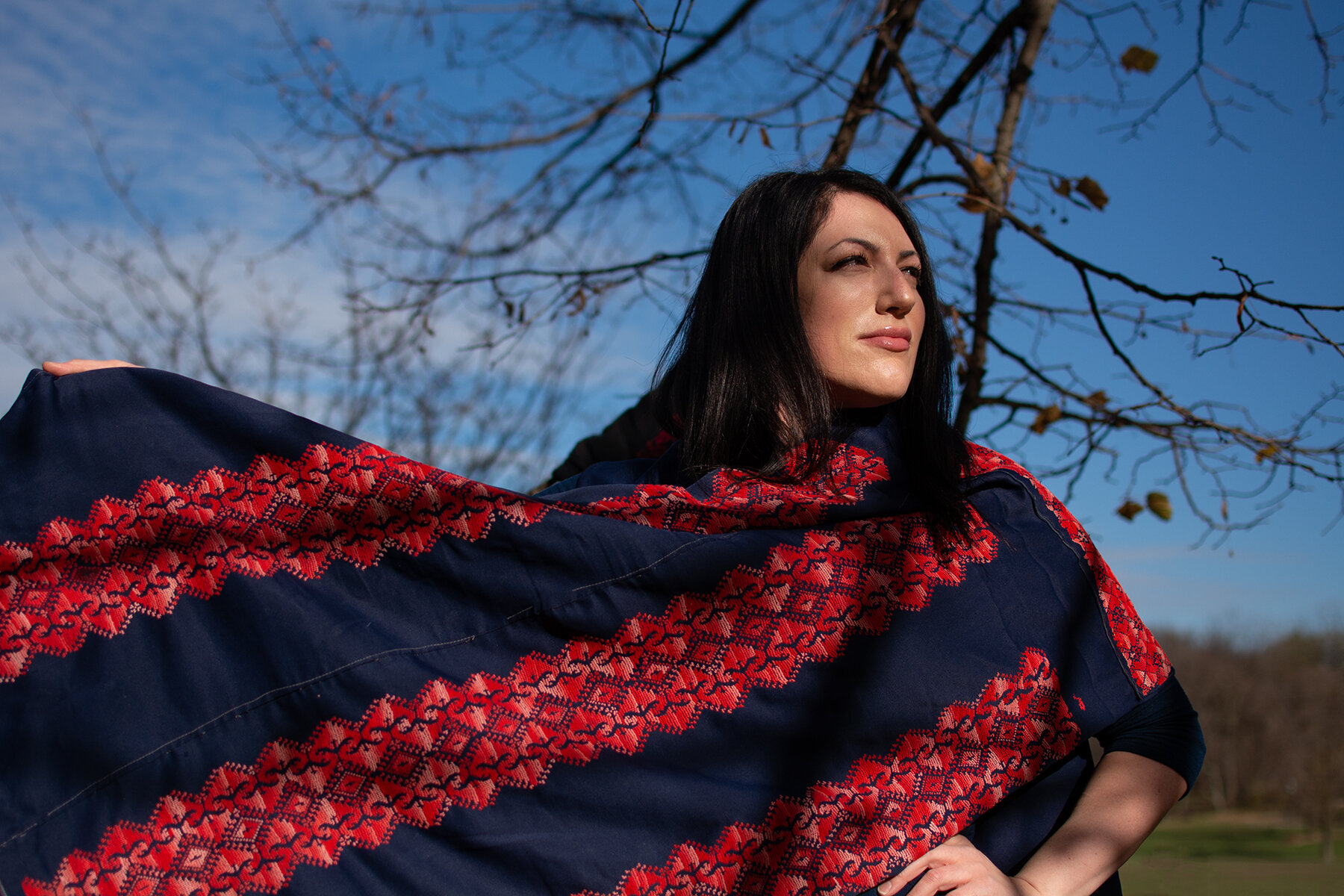
Photo courtesy of Middle East Eye
Few young Palestinian Americans learn the art of tatreez, a form of folk embroidery.
Inspiration and significance
In an interview with WMJ, teacher and scholar Enaya Othman, Ph.D., talked about the inspiration for and the significance of the Fulbright-supported research she will conduct in the 2023-24 academic year. See paraphrased highlights of the conversation below.
What inspired you to research the meanings of the Palestinian thob?
When we talk about Palestinian dress historically, around the late 19th and early 20th centuries, we describe it as seen by the colonizer. When I was working on my first book, researching American missionaries in Ramallah—Quakers who opened the first school for girls in Ramallah in 1869, I learned that, in their first encounter, the Quakers saw the Palestinian thob as backward and outdated. When they admitted girls in their schools, they asked them to take off their traditional dresses and adopt their way of dress. They were there to indoctrinate them.
There is still an idea today that mainstream fashion is Western fashion. It’s dictated by capitalist rules. So, women who are wearing thobs are resisting. Some are resisting while others are incorporating and reimaging. There can be hybridity. With it, we talk about inclusion, social justice and equity.
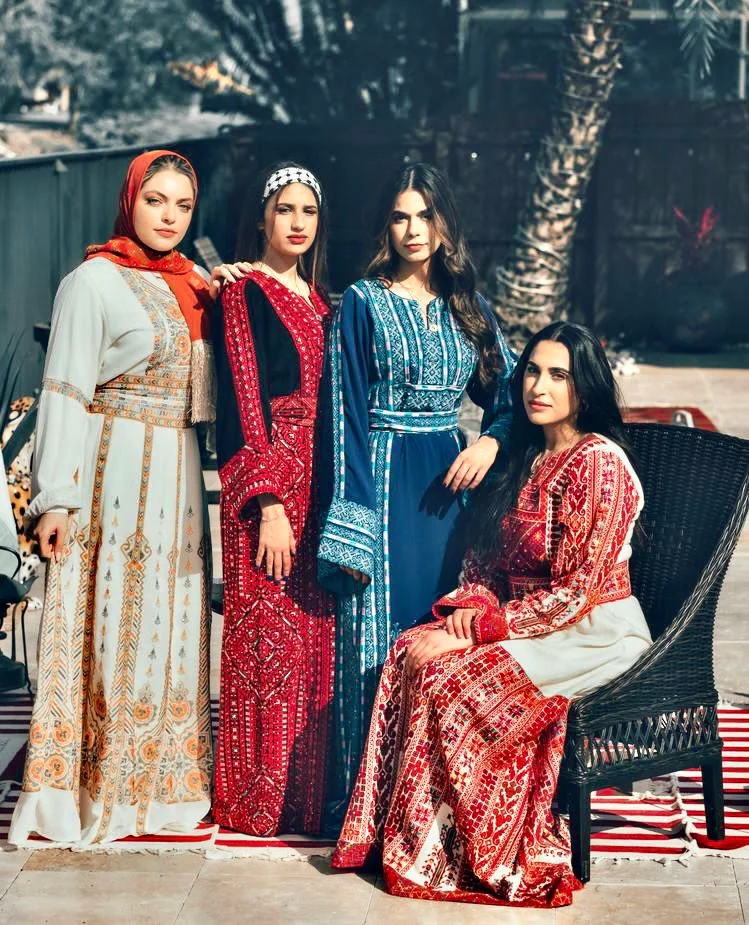
Photo courtesy of Bayt al Fann
In 2021, the United Nations’ cultural agency (UNESCO) added the art of Palestinian embroidery, or tatreez in Arabic, to its Representative List of the Intangible Cultural Heritage of Humanity.
In both the United States and Palestinian Territories, I have had the chance to see women not only take active roles in preserving and revitalizing the thob, but also ascribing various meanings to it. Among the Palestinian diaspora in Milwaukee, I have observed how Palestinian dress is gaining a national and even global significance. An active form of national movement, it is no longer just a cultural artifact for display.
U.S. Rep. Rashida Tlaib wore her Palestinian thob when she was sworn into the U.S. House of Representatives in 2019. Explaining why, she told Elle that she wanted to bring to the United States Congress “an unapologetic display of the fabric of the people in this country.”
Why is this research important?
Its major significance lies in promoting mutual understanding between nations by working towards alleviating discrimination and prejudices. Traditional dress in the contemporary era carries significance beyond regional identities. It represents meanings and messages informed by local and global politics. Yet, the research that does exist generally deals with individual countries. My project, in contrast, will map out global conditions and transnational factors, in addition to local and national policies. It will bring these two regions (the West Bank and Jordan) into a cross-cultural analysis and highlight the strategies and agency of women.

